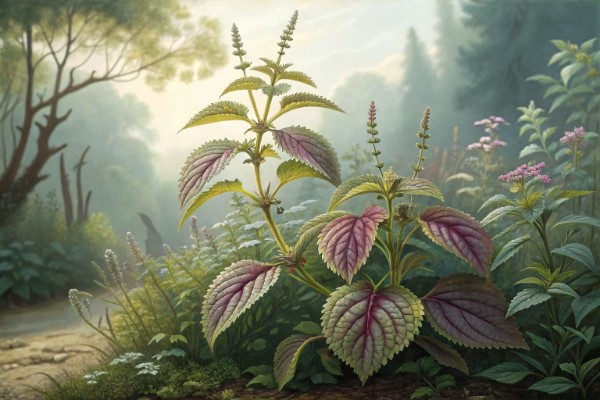Growing Loquat: How to Grow Sweet Fruit in Your Home Garden

Growing Loquat
Growing loquat takes patience, decent sunlight, and rich, well-drained soil—master these three elements and you'll pick sweet, golden fruits off your own tree. While loquats prefer mild climates, careful planting in sunny spots sheltered from harsh winds improves your odds even in temperate zones. Hungry for fresh fruit steps from your kitchen? Here's how to turn your backyard into a loquat paradise.
Growing Loquat for candy-sweet spring fruit
Growing Loquat turns a quiet corner into a spring orchard that feeds you before peaches wake up. I plant them where I can smell the blossoms on cold nights.
Climate, timing, and frost dance
Loquat blooms in late fall to winter and ripens in spring, which is why you get fruit so early. The trick is protecting flowers and pea-sized fruit from cold snaps.
“Loquat flowers are damaged around 28 F (-2 C), and young fruit near 27 F (-3 C).” UC ANR and UF/IFAS consistently note this threshold.
The tree itself tolerates much lower temperatures, roughly 10 to 15 F (-12 to -9 C), once mature. I use walls, patios, and south-facing slopes to build a pocket of warmth on the bloom side.
Site and soil that keep fruit sweet
Full sun fuels sugars and color. Partial shade still crops, but flavor softens and harvest shrinks.
Loquat likes well-drained loam at pH 6.0 to 6.5, though it puts up with 5.5 to 7.5. Heavy clay works if you mound 8 to 12 inches (20 to 30 cm) and never let water pool at the crown.
Planting, step by step
- Dig a hole twice the width of the rootball and only as deep as the root flare.
- Backfill with native soil. I skip compost in the hole to avoid perched water and lazy roots.
- Water in with 2 to 5 gallons (7.5 to 19 L) to collapse air pockets. Mulch 3 inches (7.5 cm), keeping it 4 inches (10 cm) off the trunk.
- Stake lightly in windy sites for one season, then remove.
Grafted trees fruit in 2 to 3 years. Seedlings can take 6 to 8 and often taste like a shrug.
Water and feeding that push size without blandness
Deep soak every 7 to 14 days in warm months, roughly 1 to 2 inches (25 to 50 mm) per week, easing off after harvest. Keep even moisture from bloom through sizing or fruit gets small and splits.
Feed light and frequent. I use a citrus-grade fertilizer or composted manure at bud push and again after harvest, staying modest with nitrogen to limit fire blight risk.
Pruning for reachable fruit and light
Loquat sets clusters on new growth that emerges after bloom, so I shape right after harvest. I keep trees 8 to 12 feet tall (2.4 to 3.6 m) with an open center for airflow.
Remove suckers and crossing limbs. Tip-prune vigorous shoots to a leaf cluster to stimulate short fruiting wood the next cycle.
Pollination and fruit set
Many cultivars self-fertile, some benefit from a partner nearby. Cross-pollination can jump yields and size in my orchards by a third.
I thin clusters early. Leave 4 to 8 fruit per cluster so the keepers swell like apricots and taste like mango met pear.
Top picks for variety nerds and flavor hunters
- Big Jim: Large, orange flesh, low acid, forgiving in containers. My reliable crowd-pleaser.
- Gold Nugget: Late, heavy crops, good for drying. Trees stay compact with pruning.
- Champagne: Pale flesh, aromatic, balanced sugar-acid. Bruises easier, worth it.
- Wolfe: Florida workhorse with steady production. Good backyard insurance.
- Bradenton: Productive, mild flavor, generous clusters for canning.
- Yehuda: Early, sweet-tart, nice color. Needs frost cover in marginal zones.
I plant two different cultivars 10 to 15 feet apart (3 to 4.5 m) to cover pollination and spread the ripening window. Fruit every week instead of one chaotic weekend.
Container Growing Loquat
Use a 15 to 25 gallon (57 to 95 L) container with coarse, fast-draining mix. Add 15 percent chunky pine bark or perlite to keep roots breathing.
Root prune and up-pot every 2 to 3 years. I wheel pots into a garage on freeze watch and roll them back out for bees at noon.
Frost protection that buys you a harvest
- Cover the canopy with frost cloth before sunset. Support with hoops so flowers do not touch fabric.
- Run incandescent or C9 holiday lights under the cover on forecast nights of 26 to 30 F (-3 to -1 C).
- Water soil the day before a freeze. Moist soil holds daytime heat better than dry dust.
- Cluster bagging with organza or paper bags adds a touch of warmth and blocks birds.
I have saved whole crops at 27 F (-3 C) with cloth plus lights. Without cover, I got leaves and no fruit.
Pests, diseases, and simple controls
- Birds: Bag clusters early or net the tree. A single mockingbird can clear a tree by noon.
- Fruit fly regions: Bagging is standard. Check local extension for lure and sanitation programs.
- Scale and aphids: Blast with water, then horticultural oil during dormancy-like lulls after harvest.
- Fire blight in pear country: Prune out strikes 8 to 12 inches (20 to 30 cm) below the canker in dry weather and sanitize tools.
- Snails: Copper tape around trunks in pots, and a tidy mulch line in ground.
Keep nitrogen moderate and canopy airy. That single habit reduces most headaches.
Harvest, handling, and flavor peak
Fruit does not sweeten off the tree. Color shift plus a slight soft give equals ready.
Cut clusters with pruners to avoid tearing spurs. Chill fruit quickly for juice and jam, or eat warm in the shade with sticky fingers.
Propagation and rootstock notes
Grafting holds varietal flavor and shortens time to fruit. Cleft or veneer graft onto seedling loquat in late winter as sap rises.
Seedlings make fine rootstock. I avoid air layering since roots often lack the anchor I want in wind.
Buying guide and cost-savvy tips
- Grafted trees: Pay more up front, harvest sooner, predictable flavor. Worth it.
- Bare-root in mild-winter areas: Plant fast and keep roots shaded and moist. Savings can be real.
- Container trees: Check for circling roots, prune J-hooks at planting. Choose stout trunks over top growth.
- Size: A healthy 3 to 5 gallon tree often beats a stressed 15 gallon for long-term vigor.
Ask the nursery which cultivar and pollination status you are getting. I have seen tags lie in spring chaos, so look for scion labels on the graft.
Soil health for long haul trees
Mulch with wood chips 3 to 4 inches (7.5 to 10 cm) deep and renew annually. I tuck in white clover as a living mulch to cool soil and feed pollinators.
Compost teas do little for me compared to actual compost. Save effort for pruning and thinning.
Companion ideas and orchard ecology
Underplant with comfrey, sweet alyssum, and chives to pull beneficials and buffer weeds. Keep aggressive mint in a buried pot if you crave that scent after rain.
Fava beans work as a cool-season nitrogen trick near young trees. Chop and drop before they steal spring water.
Quick troubleshooting
- Flowers drop after cold nights: Frost cloth plus lights, and plant near radiant surfaces.
- Plenty of flowers, few fruit: Add a second cultivar and invite pollinators with winter bloomers like rosemary.
- Fruit sour or bland: More sun and stricter thinning. Back off water late in sizing.
- Leaves bronze and curl: Wind or salt stress. Mulch and windbreaks help.
- Sticky shoots with ants: Aphids farming. Control ants, then wash aphids and follow with oil in the off-season.
My field notes
I have had best flavor by thinning hard and keeping trees pruned to my reach. Fruit bagging stopped the neighborhood birds from running a protection racket on my harvest.
The most productive tree I grow is a 10 foot Big Jim tucked against a stucco wall. The wall throws back just enough heat to save blooms in a nasty February snap.
Nutrient and kitchen angle
Loquat fruit leans sweet with gentle acid, perfect for fresh eating, jam, chutney, and fruit leather. The seeds are not edible, and the leaves are used in traditional teas after proper preparation.
I dry halved fruit in a dehydrator at 135 F (57 C) for 10 hours for trail snacks. The aroma makes the house smell like apricot season came early.
Stats worth remembering
Fruit often matures 60 to 90 days after full bloom in mild climates. Flowers and young fruit are the weak link below 28 F (-2 C).
Keep that window in mind while planning frost protection and irrigation. It pays you back in bowls of bright orange fruit when everything else still sulks.
Sources and further reading
- University of California Agriculture and Natural Resources, Fruit Trees: Loquat. Guidance on frost thresholds, pruning, and cultural care.
- University of Florida IFAS Extension, Loquat in the Florida Home Landscape. Notes on cold injury at 27 to 28 F, fertilization, and cultivars.
- Texas A&M AgriLife Extension, Loquat. Variety notes, training, and site recommendations for Gulf Coast growers.
- University of Hawaii CTAHR, Loquat Production. Bloom to harvest timing, irrigation, and postharvest handling.
Cheatsheet: Home-Grown Loquat Fruit, Fast & Easy
🌤️ Sun & Climate
Full sun yields best fruit. Tolerates light frost (down to 25°F/-4°C). USDA zones 8–10.
🌱 Soil & Planting
Plant in well-drained, sandy loam. pH 6.0–6.5. Space trees 15–25 ft (4.5–7.5 m) apart. Dig hole twice root ball width.
💧 Watering
Keep soil moist, not soggy. Deep water every 7–10 days (once established). Mulch for moisture retention.
🌸 Pollination & Fruit Set
Most are self-fertile, but planting two increases yield. 6–8 months after bloom, harvest sweet, vitamin A-rich fruit.
✂️ Pruning
Remove suckers, water sprouts, dead wood after harvest. Shape open canopy for airflow and sun.
🌾 Feeding
Apply citrus fertilizer early spring and midsummer. Avoid overfertilizing; excess nitrogen reduces fruiting.
🦠 Pests & Disease
Bag clusters to deter birds. Treat fire blight with copper fungicide. Control scale and aphids with horticultural oil.
⚒️ Tools and Products You’ll Need
- Pruning shears
- Mulch
- Loquat sapling or seed
- Slow-release citrus fertilizer
- Copper fungicide
- Shovel
- Horticultural oil
- Fruit bags (optional)
🍑 Harvest & Use
Pick when fruit is soft and fully orange/yellow. Enjoy fresh, in jams, or in desserts. High in antioxidants & fiber.
Frequently Asked Questions About Growing Loquat Trees
What soil conditions support healthy loquat tree growth?
Loquat trees thrive in well-draining, fertile soil with a slightly acidic to neutral pH range of approximately 6.0 to 7.0. Mixing organic compost into the planting area enriches the soil, enhancing moisture retention and nutrient availability.
How often should loquat trees be watered?
During the first growing season, water loquat trees regularly—about once or twice a week—to help establish robust root systems. Mature trees typically require watering every two weeks, providing roughly 1 inch (2.5 cm) of water per session, depending on local rainfall and climate conditions.
What are ideal sunlight conditions to encourage loquat fruiting?
For optimal fruit production, plant loquat trees in a location that receives full sun, at least 6 to 8 hours of direct sunlight daily. Although loquats tolerate partial shade, ample sun exposure significantly enhances flower formation and fruit yield.
When is the best time to prune loquat trees?
The recommended pruning period occurs immediately after harvest, typically in late spring or early summer. Remove dead or crossing branches and thin overcrowded areas to encourage airflow, light penetration, and healthy fruit development.
How can loquat trees be protected from frost damage?
Although loquat trees endure mild cold spells, prolonged frost below 25°F (-4°C) threatens blooms and fruit. Protect young and sensitive trees by covering with frost cloth or blankets during cold snaps. Planting trees in sheltered locations near walls or structures also helps retain warmth.
What steps prevent common loquat pests and diseases?
Regular inspections allow early detection of pests such as aphids, scale insects, or fruit flies. Remove and discard infected fruit or foliage promptly. Applying horticultural oil or insecticidal soap effectively controls infestations, maintaining overall tree health and productivity.
When are loquat fruits ready for harvesting?
Loquat fruits ripen in late winter to early spring, depending on local climate conditions. Harvest when fruits display a vibrant yellow-orange hue, slight softness when gently squeezed, and a pleasantly sweet fragrance. Avoid harvesting underripe fruits, as loquats cease ripening after being picked.
Growing loquat rewards patience and a little grit. Give these trees sun, well-drained soil, and a touch of care, and they’ll return the favor with clusters of sweet, golden fruit. Prune for shape, water regularly, and watch for pests—nature always keeps you on your toes. In a world crowded with the ordinary, loquats deliver something rare: fruit straight from your own yard, sun-warmed and dripping with flavor. If you’re drawn to unique crops, you might also enjoy growing schisandra vine for its exotic punch. The key with loquats? Stick with it. The payoff is worth every minute spent in the dirt.



